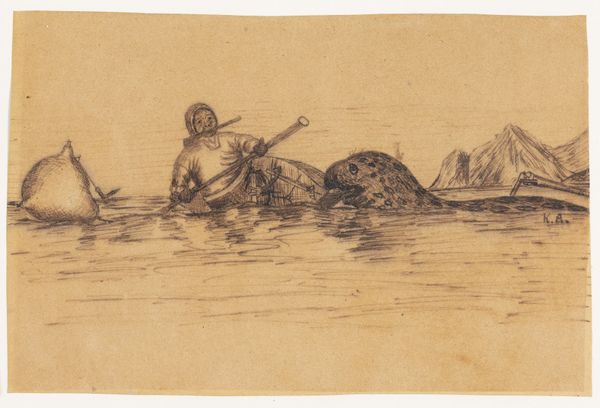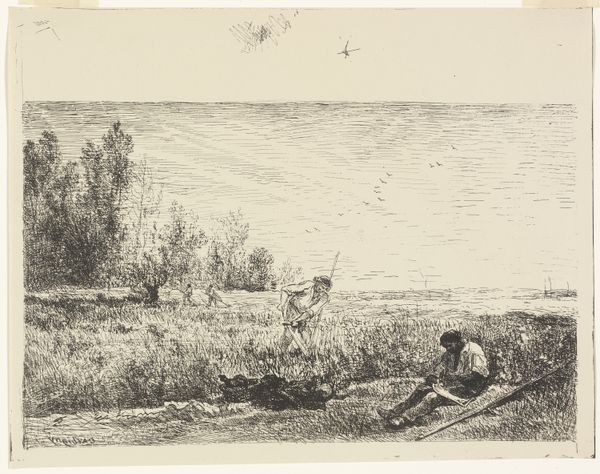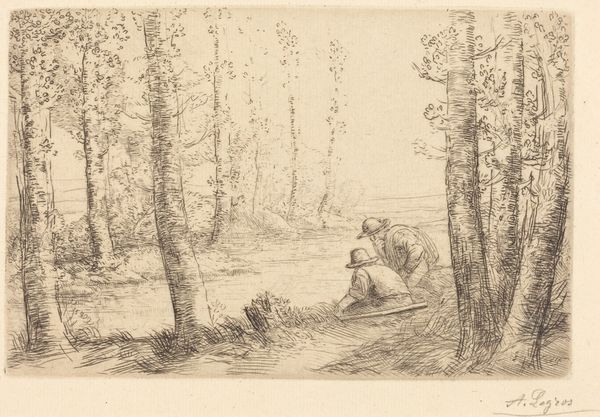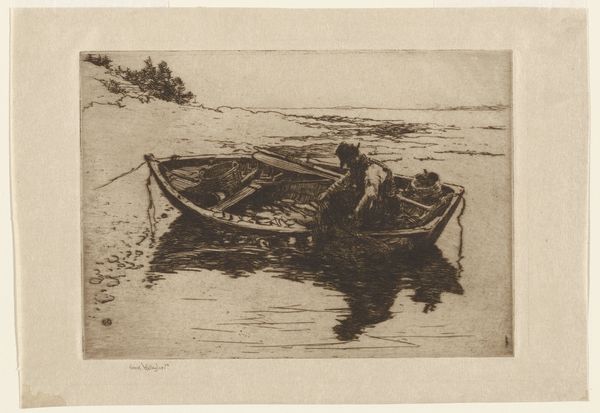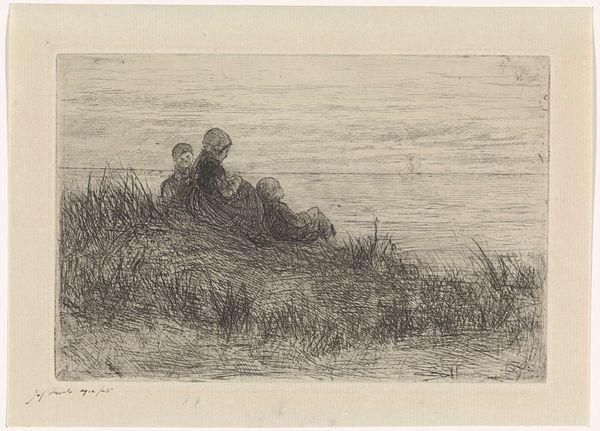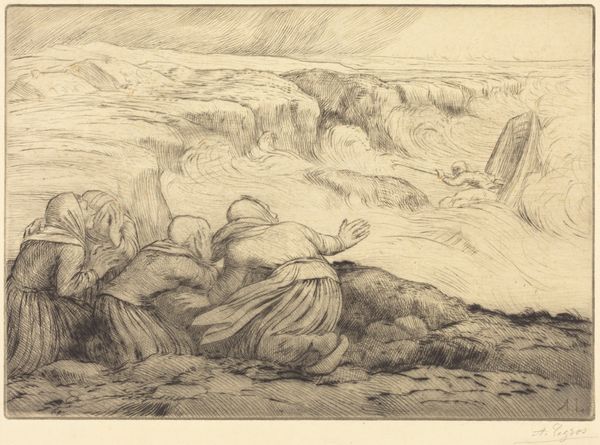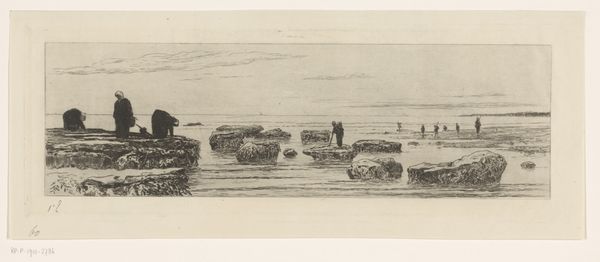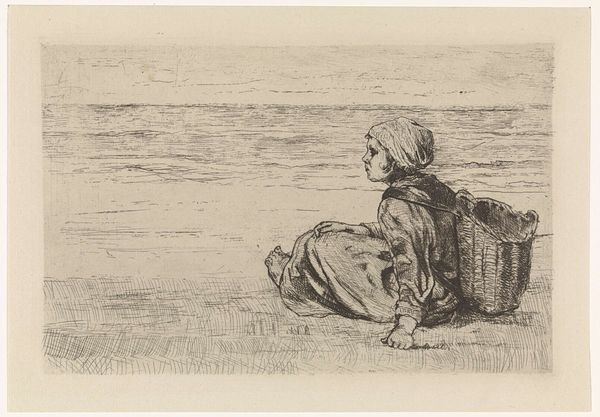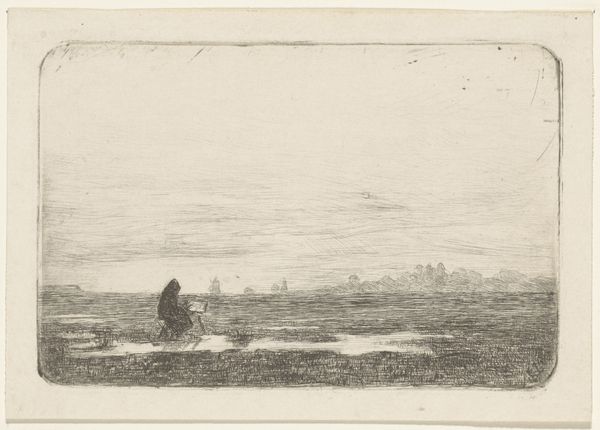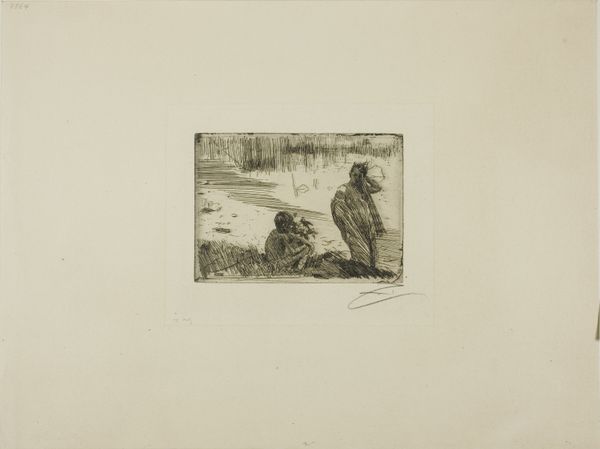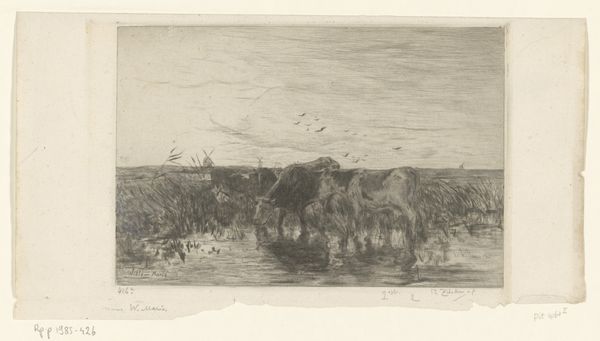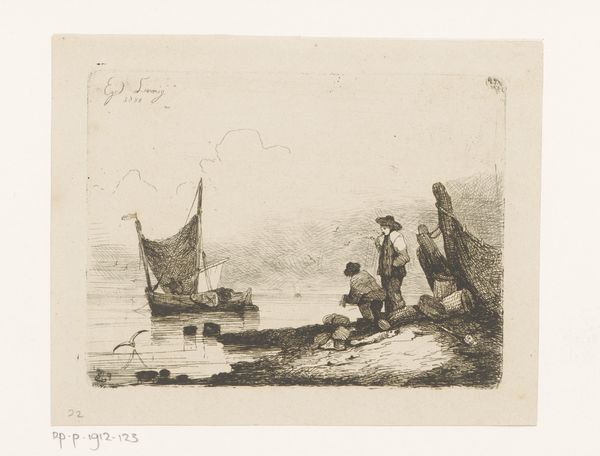
drawing, pencil
#
pencil drawn
#
drawing
#
impressionism
#
pencil sketch
#
landscape
#
charcoal drawing
#
figuration
#
rock
#
pencil drawing
#
pencil
#
pencil work
#
realism
Dimensions: height 141 mm, width 237 mm
Copyright: Rijks Museum: Open Domain
Curator: Immediately I see the Romantic ideal, solitude on the shore. Editor: I agree, there’s something compelling about the isolation here. We’re looking at "Boy Lying on Boulders on the Beach," a pencil drawing by Henri-Charles Guérard. The Rijksmuseum estimates it was made sometime between 1856 and 1897. It captures a lone figure stretched out on a rock formation at the water’s edge, gazing out at the sea. Curator: Water often represents the unconscious in art, that liminal space. He’s almost melding into the rock, part of the natural world. It speaks to that yearning for the sublime, the smallness of man in the face of nature. Editor: Absolutely, but it’s interesting that it is rendered in pencil. The sketch-like quality lends it an immediacy, almost like a snapshot of a fleeting moment rather than a grand statement on nature's power. The Impressionist landscape style flattens the scene, diminishing dramatic scale for direct visual experience. Curator: Yes, the lack of color is significant. It directs our attention to form and tone. Note how Guérard uses hatching and cross-hatching to create depth. It focuses on texture. Rock is stable. Water is transient. The boy represents humanity caught between the two. Editor: I see the boy not just as a symbol, but as situated within a specific historical context. During this time, increased industrialization pushed artists to explore the beauty of the natural world. Think of the Barbizon School, who looked outside academic painting practices. This resonates with similar sentiments about modernity. Curator: That makes me think—did this artist capture that same yearning as the Transcendentalists did, who sought truth and spirituality outside of institutions and more in tune with nature? Is that part of the work's deeper appeal? Editor: Well, it suggests that Guérard’s artwork taps into complex socio-political reactions, which shaped artistic trends and aesthetic preferences for representing everyday subjects as well as timeless symbolism. It is this confluence that continues to resonate. Curator: For me, it’s that eternal quest, to understand ourselves in relation to the infinite. Thank you for contextualizing this image within society, bringing history to it in new light. Editor: Thank you for sharing your rich insights on Guérard’s captivating work!
Comments
No comments
Be the first to comment and join the conversation on the ultimate creative platform.
